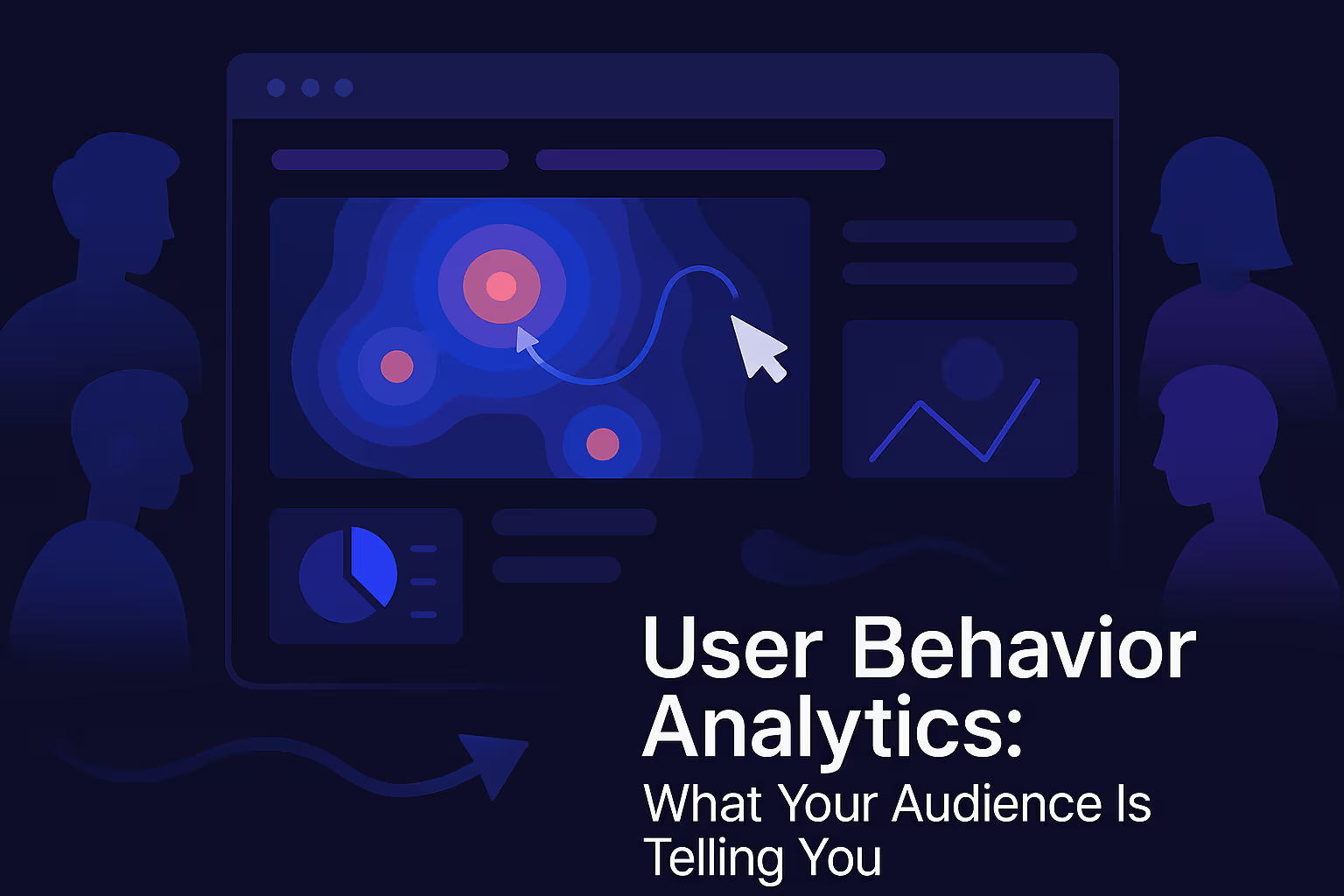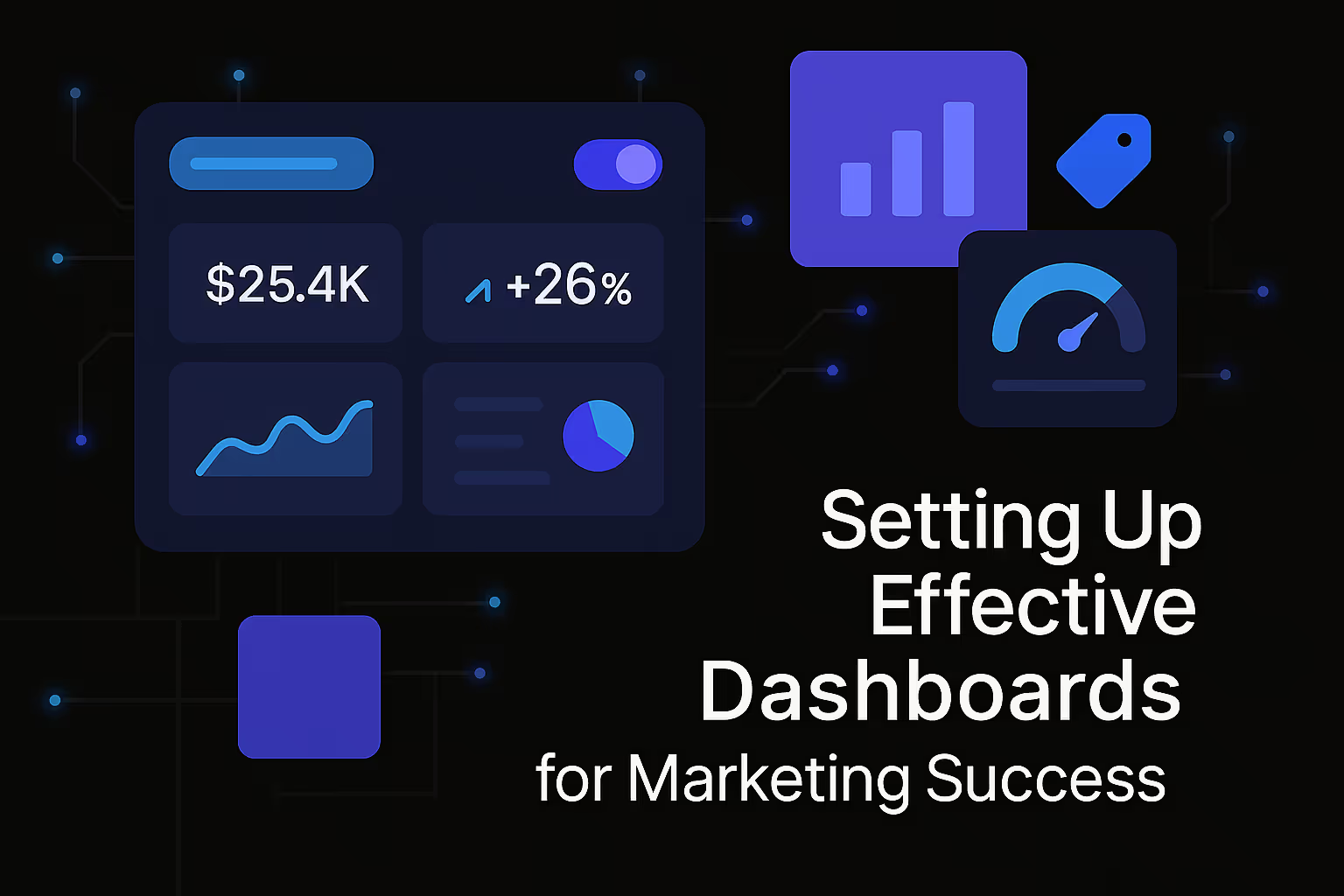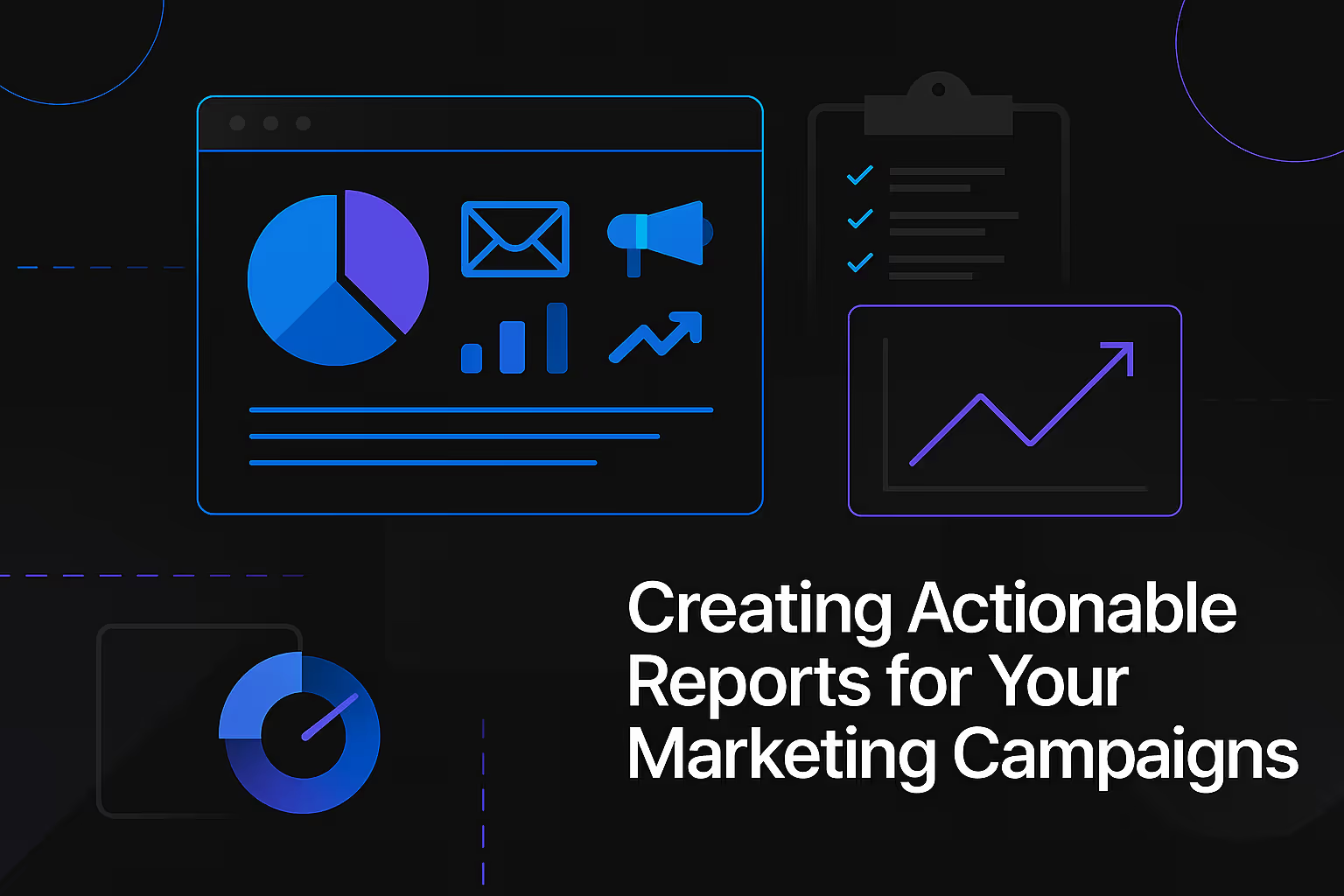User Behavior Analytics: What Your Audience Is Telling You

Understanding your audience is the bedrock of any successful digital strategy. In a world saturated with information and choices, knowing how users interact with your digital assets—your website, your app, your content—is not just beneficial, it is absolutely essential. This deep understanding comes from the meticulous practice of user behavior analytics. It’s more than just tracking clicks or page views; it’s about deciphering the silent language of your audience, uncovering their true intentions, pain points, and preferences as they navigate your digital landscape.
User behavior analytics is the process of collecting, analyzing, and interpreting data about how users interact with a product or service. This encompasses everything from where they click, how far they scroll, what paths they take through your site, and even moments of frustration or hesitation. By observing these digital footprints, businesses can gain unparalleled insights into the effectiveness of their design, content, and overall user experience. It allows you to move beyond assumptions and make data-driven decisions that resonate directly with the needs and desires of your actual users. This proactive approach ensures that your digital presence is not just aesthetically pleasing, but fundamentally functional and optimized for maximum engagement and conversion.
The Unspoken Language of Digital Footprints: Why User Behavior Matters
Every scroll, every click, every moment a user spends or abandons your site, is a piece of data, a whisper or a shout about their experience. Ignoring these signals is akin to navigating a complex terrain blindfolded. User behavior analytics provides the sensory input you need to see clearly, adapt quickly, and optimize continuously. It transforms raw data into actionable intelligence, revealing patterns and anomalies that inform crucial business decisions. Without this insight, businesses are left guessing, often implementing changes based on intuition rather than empirical evidence, which can lead to wasted resources and missed opportunities.
The digital realm is dynamic, with user expectations constantly evolving. What worked yesterday might be a source of friction today. This constant flux necessitates an ongoing commitment to understanding user behavior. It helps identify areas of strength to leverage and weaknesses to address. By focusing on user journeys, businesses can pinpoint exact moments of user drop-off, understand why certain content performs better than others, and even predict future user actions. This predictive power is invaluable for proactive strategy development and maintaining a competitive edge in a crowded market.
Moving Beyond Basic Metrics: The Depth of Data
While traditional metrics like page views and unique visitors offer a foundational understanding, user behavior analytics delves much deeper. It concerns itself with the quality of engagement, not just the quantity. This shift in perspective is critical for truly optimizing your digital strategy. For instance, a high bounce rate on a particular page isn’t just a number; it’s a strong indicator that the content isn't meeting user expectations or that the navigation is confusing. Similarly, a low click-through rate on a call to action suggests that its placement, design, or messaging might need rethinking. These are the kinds of nuanced insights that drive meaningful improvements.
Understanding user behavior is about answering the "why" behind the "what." Why are users leaving? Why are they clicking here and not there? Why are they spending more time on one section versus another? The answers to these questions unlock pathways to enhanced user experience, improved conversion rates, and ultimately, greater business success. It’s an iterative process of hypothesis, testing, analysis, and refinement, all driven by the desire to better serve your audience.
Deciphering Key User Behavior Metrics
To effectively interpret what your audience is telling you, it’s crucial to understand the language of various user behavior metrics. These metrics are the quantifiable signals that illustrate how users interact with your digital properties. While their individual meanings are important, their true power lies in how they coalesce to paint a holistic picture of the user journey.
Click-Through Rate (CTR): The Lure of Relevance
Click-Through Rate, or CTR, is a fundamental metric that indicates the percentage of users who click on a specific link or call to action after viewing it. In the context of search engines, a high CTR for your organic listings suggests that your title tags and meta descriptions are compelling and accurately reflect the content’s relevance to the search query. It’s a direct measure of how enticing your content appears to potential visitors, and whether it aligns with their search intent. A strong CTR indicates that you are effectively communicating the value of your page before the user even lands on it.
Beyond search listings, CTR applies to internal links, banners, and any interactive element on your site. A low CTR on an internal call-to-action might suggest it’s poorly placed, visually unappealing, or the surrounding content doesn't adequately motivate a click. Analyzing CTR across different elements helps optimize your site’s navigation and prompts, guiding users more effectively through their desired pathways.
Bounce Rate: The Immediate Impression
Bounce rate signifies the percentage of visitors who land on a page and then leave without interacting further with the site. A high bounce rate can be a significant red flag, indicating that your content might not be meeting user expectations, the page loads too slowly, or the design is unappealing. While a high bounce rate on a blog post designed solely for information consumption might be acceptable if users find their answer quickly, it’s typically a concern for pages intended to drive deeper engagement or conversion.
Understanding the context of bounce rate is key. If a user lands on a contact page, gets the phone number, and leaves, that's a successful interaction even with a 100% bounce rate. However, if they land on a product page and immediately bounce, it often points to a misalignment between their expectations and the page’s content or design. Analyzing bounce rate in conjunction with other metrics, such as time on page, provides a more nuanced understanding of user satisfaction and content effectiveness.
Time on Page / Average Session Duration: Measuring Engagement Depth
Time on Page, or Dwell Time, measures how long users spend actively engaging with a specific page, while Average Session Duration tracks the total time users spend on your site during a single visit. These metrics are powerful indicators of content engagement and relevance. A longer time on page generally suggests that users are finding the content valuable, absorbing information, or interacting with elements. Conversely, a very short time on page can signal that users are not finding what they expected, the content is not engaging, or they are struggling to navigate.
These metrics offer insights into content quality and user interest. For long-form articles, a high time on page is desirable, indicating thorough reading. For product pages, a good session duration might mean users are exploring features, comparing options, or reviewing images. By examining these durations across different content types and user segments, you can identify which content truly captivates your audience and which requires refinement.
Conversion Rate: The Ultimate Outcome
Conversion rate is perhaps the most critical metric for many businesses, representing the percentage of users who complete a desired action, such as making a purchase, filling out a form, or signing up for a newsletter. This metric directly correlates with your business objectives and return on investment. While other metrics speak to engagement, conversion rate speaks to effectiveness. It tells you if your user experience is effectively guiding visitors towards your business goals.
Optimizing conversion rates often involves a holistic approach to user behavior analytics. It means identifying friction points in the conversion funnel, understanding why users abandon carts, or where they get stuck in a sign-up process. By leveraging insights from heatmaps, session recordings, and A/B tests, businesses can systematically remove these barriers and streamline the path to conversion, ultimately increasing the number of users who become customers or leads.
Tools and Techniques for Uncovering User Insights
To effectively gather and interpret user behavior data, a diverse toolkit of analytics platforms and methodologies is essential. These tools provide the lenses through which you can observe, measure, and understand the intricate dance of user interaction on your digital properties. The right combination of these techniques offers a truly comprehensive view of your audience’s journey.
Web Analytics Platforms: The Foundation of Data
Tools like Google Analytics are the cornerstone of user behavior analysis. They provide a macroscopic view of your website traffic, offering insights into audience demographics, acquisition channels, page performance, and conversion paths. These platforms track a vast array of metrics, allowing you to see traffic sources, identify popular content, and understand general user flow. They are indispensable for answering broad questions about your audience and their overall engagement.
Beyond basic traffic, modern web analytics can be configured to track custom events, allowing for a deeper understanding of specific user actions, such as video plays, document downloads, or interactions with specific site features. This level of customization transforms a standard analytics platform into a powerful, tailor-made insights engine, reflecting the unique goals and interactions relevant to your business.
Heatmaps: Visualizing User Attention
Heatmaps offer a powerful visual representation of user attention and engagement on a webpage. Different types of heatmaps reveal distinct patterns:
- Click maps show where users click the most, highlighting popular interactive elements or revealing areas where users are attempting to click on non-clickable elements, indicating design confusion.
- Scroll maps illustrate how far down a page users scroll, identifying content that is frequently overlooked or where users tend to drop off. This helps optimize content placement and ensure critical information is above the fold or within typical viewing areas.
- Move maps track mouse movements, often correlating with eye-tracking, providing insights into where users are looking even if they aren’t clicking.
These visual tools provide immediate, intuitive understanding of user interaction, making it easier to identify design flaws, unengaging content, or neglected calls to action. They bridge the gap between quantitative data and qualitative understanding.
Session Recordings: Walking in Your Users' Shoes
Session recordings, also known as session replays, capture individual user sessions, allowing you to watch exactly how a user navigates, interacts, and experiences your website. This is perhaps the most qualitative of all user behavior analytics tools, offering an unparalleled level of detail. You can observe mouse movements, scrolls, clicks, form interactions, and even moments of frustration like rage clicks or repetitive actions.
Watching these recordings can uncover usability issues that quantitative data alone might miss. You might see users struggling to find a specific button, getting lost in navigation, or repeatedly trying to interact with a non-responsive element. These direct observations provide invaluable context, helping to diagnose problems with design, content clarity, or technical glitches, and informing precise solutions.
A/B Testing: Validating Hypotheses with Data
A/B testing, or split testing, is a controlled experiment where two or more versions of a webpage or element are shown to different segments of your audience to determine which performs better. This method is crucial for validating hypotheses derived from user behavior analysis. For example, if heatmaps suggest a call to action isn’t getting enough clicks, you might A/B test different colors, placements, or copy for that button.
A/B testing provides empirical evidence for design and content decisions. Instead of guessing whether a change will improve performance, you can test it directly against your current version and measure the impact on key metrics like CTR, conversion rates, or time on page. This iterative process of testing and optimizing ensures that every change you implement is backed by data, leading to continuous improvement and enhanced user experience.
Surveys and Feedback Forms: Directly Asking Your Audience
While digital footprints provide objective data, sometimes the most direct way to understand your audience is simply to ask them. On-site surveys, feedback forms, and exit surveys can provide invaluable qualitative data, revealing user motivations, satisfaction levels, and pain points directly from the source. These tools allow users to express their opinions, suggest improvements, and articulate challenges they faced.
Integrating these direct feedback mechanisms with your behavior analytics tools creates a powerful synergy. You can use quantitative data to identify where users are struggling, and then use surveys to understand why they are struggling. For instance, if you notice a high bounce rate on a checkout page, an exit survey might reveal that shipping costs were unexpectedly high or that the payment options were insufficient. This combined approach offers both the "what" and the "why," leading to more informed and targeted solutions.
Translating Insights into Action: Optimizing for Your Audience
Collecting user behavior data is only the first step; the true power lies in translating these insights into actionable strategies that optimize your digital presence and drive business growth. This involves a continuous cycle of analysis, hypothesis, implementation, and measurement, always with the user at the forefront.
Enhancing User Experience (UX): Removing Friction Points
One of the primary benefits of user behavior analytics is its ability to pinpoint and alleviate user experience friction. If session recordings show users struggling with a complex form, the insight leads to simplifying fields, adding clear instructions, or implementing real-time validation. If scroll maps reveal that crucial content is being missed, the action is to reposition it higher on the page or make it more visually prominent.
By systematically identifying and addressing these friction points, you create a smoother, more intuitive, and ultimately more enjoyable experience for your users. A positive user experience not only encourages deeper engagement but also fosters loyalty and increases the likelihood of conversion. It’s about building a digital environment that anticipates user needs and effortlessly guides them towards their goals.
Optimizing Content Strategy: Delivering What Users Want
User behavior data provides invaluable guidance for refining your content strategy. Analyzing time on page, scroll depth, and even search queries leading to your site can reveal what topics truly resonate with your audience and which formats they prefer. If an evergreen article consistently holds attention for extended periods, it signals a strong interest in that topic, suggesting opportunities for further content development or related pieces.
Conversely, if certain content consistently exhibits high bounce rates or low engagement, it indicates a need for revision, better targeting, or even removal. This data-driven approach ensures that your content creation efforts are aligned with actual audience demand and engagement patterns, making your content more effective and more likely to achieve its objectives, whether that’s informing, entertaining, or converting.
Improving Website Navigation and Information Architecture: Intuitive Pathways
The way users navigate your site is a direct reflection of your information architecture. Heatmaps and user flow reports can reveal common navigation paths, identify confusing menus, or highlight sections of your site that users frequently overlook. If users are consistently clicking the back button or abandoning a session after visiting a particular navigation link, it indicates a problem with clarity or expectation alignment.
Insights from these analyses can lead to redesigning navigation menus, consolidating similar content, or creating more logical content clusters. The goal is to create intuitive pathways that allow users to effortlessly find the information or complete the tasks they came for. An optimized navigation system reduces frustration, increases discoverability of valuable content, and improves overall site stickiness.
Boosting Conversion Rate Optimization (CRO): Streamlining the Journey to Goals
User behavior analytics is the lifeblood of Conversion Rate Optimization. Every metric, from CTR to bounce rate to session duration, contributes to understanding the efficiency of your conversion funnels. Session recordings can visually highlight exactly where users abandon a checkout process, revealing issues like unexpected form errors, security concerns, or a lack of clear calls to action.
A/B testing allows you to systematically test different elements within the conversion path, such as button colors, form layouts, persuasive copy, or even the number of steps in a checkout process. By iteratively testing and implementing data-backed changes, you can significantly increase the percentage of visitors who complete desired actions, directly impacting your bottom line and maximizing the return on your marketing efforts.
The Future of Understanding Your Audience: Predictive Analytics and AI
The landscape of user behavior analytics is continuously evolving, with artificial intelligence and machine learning at the forefront of this transformation. As data sets grow larger and analytical capabilities become more sophisticated, businesses will move beyond simply understanding past behavior to anticipating future actions.
Predictive Analytics: Foreseeing User Needs
Predictive analytics leverages historical user behavior data to forecast future trends and individual user actions. By applying machine learning algorithms to vast quantities of data, businesses can identify patterns that indicate a likelihood of churn, predict future purchases, or anticipate specific user needs before they even arise. For example, an e-commerce platform might use predictive analytics to identify users at risk of abandoning their cart, triggering a timely and relevant intervention.
This forward-looking approach allows for proactive engagement strategies, highly personalized experiences, and more efficient resource allocation. Instead of reacting to user behavior, businesses can begin to shape it, offering tailored content, products, or support at precisely the right moment.
AI-Powered Insights: Automated Understanding
Artificial intelligence is increasingly being integrated into user behavior analytics platforms, automating the process of identifying anomalies, surfacing key insights, and even suggesting optimization opportunities. AI algorithms can process massive amounts of data much faster than humans, identifying subtle patterns and correlations that might otherwise go unnoticed.
Imagine an AI system that automatically flags pages with unusually high bounce rates, identifies the probable cause based on session recordings, and then recommends specific A/B tests to address the issue. This level of automated insight empowers marketing teams and product managers to make faster, more informed decisions, allowing them to focus on strategic execution rather than manual data sifting. AI will democratize sophisticated analytics, making deep user understanding accessible to a broader range of businesses.
Personalization at Scale: Tailored Experiences
With enhanced understanding through predictive analytics and AI, the ability to deliver hyper-personalized user experiences will become the norm. Websites and applications will dynamically adapt to individual user preferences, behavior patterns, and inferred needs, offering content, products, and services that are uniquely relevant to each visitor. This goes beyond simple recommendation engines; it involves real-time adjustments to the user interface, content presentation, and call-to-action sequencing.
This level of personalization not only improves user satisfaction and engagement but also significantly boosts conversion rates. When users feel understood and valued, they are more likely to interact, trust, and ultimately convert. The future of user behavior analytics is about creating a truly symbiotic relationship between businesses and their audience, where digital experiences are not just optimized, but deeply empathetic.
Conclusion: Empowering Your Digital Strategy with User Insights
User behavior analytics is not merely a technical exercise; it is a fundamental shift in how businesses understand and interact with their audience. It moves beyond superficial metrics to delve into the genuine motivations, preferences, and challenges of the people engaging with your digital properties. By meticulously collecting, analyzing, and interpreting these digital footprints, you gain an unparalleled ability to decipher the unspoken language of your users.
The insights derived from understanding click-through rates, bounce rates, session durations, and conversion paths, combined with visual tools like heatmaps and the direct observations from session recordings, provide a robust foundation for informed decision-making. These insights empower you to optimize your user experience, refine your content strategy, improve website navigation, and boost conversion rates, all while ensuring that your efforts are truly user-centric.
In an increasingly competitive digital landscape, the businesses that thrive are those that listen most intently to their audience. User behavior analytics provides the sophisticated ears and eyes needed to hear every whisper and see every nuance of user interaction. Embracing this discipline is not just about improving numbers; it's about building stronger connections, fostering deeper engagement, and ultimately creating a digital presence that genuinely resonates with and serves the very people you aim to reach. By continuously learning from your audience, you pave the way for sustainable growth and enduring success.
Similar Insights
Stay Updated with Our Insights
Join our newsletter for the latest trends and tips in web development and digital marketing.




